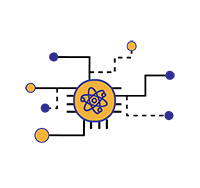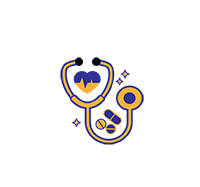Research Streams
Diverse and emerging research streams at SBASSE
Sustainable Innovation in the Food-Water-Energy Nexus The Quantum Revolution Health and Medicine Numerics and Mathematical Modelling Nanomaterials and Computational Materials Science Revolutionizing The Internet of Things (IoT) Technologies Technology for Development
The spectrum of SBASSE’s Research

Sustainable Innovation in the Food-Water-Energy Nexus:

Food, water, and energy securities are interlinked. For example, water is used for drinking, irrigation, and to produce energy. Following are some of the major research areas in SBASSE right at the confluence of food, water and energy.
I. Food
How many times have we read scandals about expired packaged food being sold in supermarkets? How many times have we worried about the quality and possible contamination of milk or water that our families are consuming?
Dr. Imran Cheema’s group aims at developing portable, optical tools, clever spectroscopic devices, to detect contamination of milk and water. Dr. Wasif Tanveer aims to develop innovative sensors to detect food spoilage in super markets.
In the agricultural sector, the Centre for Water Informatics and Dr. Abubakr Muhammad’s research concern includes developing mechanisms for improved irrigation efficiency, managing water distribution through low-cost hydro-sensors developed in-house and enhanced crop yields while minimizing the environmental impact of agricultural activities.
II. Water
In order to provide clean and safe water for drinking and irrigation, researchers in our Biology and Chemistry Departments and the Functional Nanomaterials Group (FNM) have developed certain nanoparticles such as metal/metal oxide (inorganic), water soluble nanocomposites, which can be used as sensitive probes (sensors) to determine, both qualitatively and quantitatively, the presence of harmful pathogens in drinking water, and titanium oxide microbeads (such as the ones found in face scrubs) for destroying harmful textile dyes.
Dr. Zahra Lakdawala’s research group is working on the framework for the creation and maintenance of geological databases about rocks and groundwater, which will help experts optimize the use of available groundwater and identify health hazards, e.g. groundwater contamination. Additionally, Dr. Hassan Jaleel is interested in developing efficient pricing mechanisms for demand-based allocation of surface water in order to minimize wastage of water.
III. Energy
Renewable energy sources such as hydro and solar promise to mitigate global warming and climate change caused by the extravagant use of fossil fuels and meet the world’s increasing energy demand. Spearheaded by the Energy Informatics Group, but also couched within the disciplinary research clusters, the research groups of Dr. Rahman Saleem (Organic Chemistry Group), Dr. Ammar Khan, Dr. Irshad Hussain (Functional Nanomaterials Group), and Dr. Wasif Tanveer have already designed and engineering new kinds of solar cells, photovoltaic devices, and energy harvesting materials with the objectives of either energy production or light-catalyzed splitting of water, which is important for producing hydrogen. The latter is called photocatalysis.
Groups led by Dr. Ammar Khan in physics and Dr. Rahman Shah Zaib Saleem in chemistry create perovskite based and dye-sensitized solar cells (DSSCs) with the goal of enhancing photovoltaic efficiency. Dr. Wasif Tanveer aims to explore the integration of radio frequency energy harvesting with printed solar energy harvesting technologies and Dr. Muhammad Zaheer is exploring the generation of energy from abundant waste plastic.
Generation of solar energy requires large areas of land to install photovoltaic cells. Dr. Nauman Zafar Butt is working on innovative agrivoltaic systems (AVS), which utilize agricultural land to simultaneously produce energy by installing photovoltaic panels over crops.
Dr. Hassan Abbas Khan pioneers the optimized provision off-grid electrification using solar powered DC microgrids, with targets as ambitious as achieving zero-net-energy buildings through extensive solar cell integration. Additionally, Dr. Naveed-ul-Hassan explores consumer-oriented energy trading and tariff and unit sharing models as potential solutions for energy optimization as well as income generation for households.
Dr. Muhammad Shoaib is focused on electrochemical energy storage technology in rechargeable batteries, their reaction mechanism and strategies to improve their capacity. The eventual goal is to develop a better understanding of battery chemistry, improve their charge storage capability and finally reduce the cost per unit of energy stored.
Faculty
Dr. Wasif Tanveer (Department of Electrical Engineering)
Dr. Nauman Zafar Butt (Department of Electrical Engineering)
Dr. Imran Cheema (Department of Electrical Engineering)
Dr. Hassan Jaleel (Department of Electrical Engineering)
Dr. Abubakr Muhammad (Department of Electrical Engineering)
Dr. Hassan Abbas Khan (Department of Electrical Engineering)
Dr. Muhammad Zaheer (Department of Chemistry and Chemical Engineering)
Dr. Irshad Hussain (Department of Chemistry and Chemical Engineering)
Dr. Rahman Shah Zaib Saleem (Department of Chemistry and Chemical Engineering)
Dr. Ammar Ahmad Khan (Department of Physics)
Dr. Zahra Lakdawala (Department of Mathematics)
Dr. Naveed ul Hassan (Department of Electrical Engineering)
Dr. Muhammad Shoaib (Department of Chemistry and Chemical Engineering)
Dr. Ali Rauf (Department of Chemistry and Chemical Engineering)
Research Groups
- Energy Systems & Simulation Lab
- Laboratory for Emerging Devices & Technologies for Sustainability & Healthcare
- Energy Materials
- Energy and Power Systems Cluster
- Bio-Agri-Photonics (BAP)
- Functional Nanomaterials Group
The Quantum Revolution:

The second quantum revolution is poised to revolutionize the way we treat and view information, how information is processed, how we communicate, how data is transferred from point to point and also promises to radically change how we design drugs, solve exceptionally hard problems, make commerce secure, how we maintain our physical standards and just how we think about the world around us.
Quantum systems come in different kinds. An open quantum system is one which interacts with the environment or another quantum system. The study of open quantum systems gives us insight into fundamental questions of quantum cosmology, such as, ‘what took place in the early universe?’ and ‘what happens inside black holes?’ It also allows us to build devices with unprecedented performance and computing power called quantum computers in addition to promising secure communications systems. In order to make the quantum computer a reality, the Physics and Electrical Engineering Departments work in close synergy. Dr. Adam Zaman’s research focuses on answering questions about how realistic open quantum systems work and how we can use these systems to build a quantum computer that is useful and scaleable.
Dr. Moeez Hassan's quest is to explain gravity as a quantum force, which will help us understand the early universe and black holes. His work contributes to the global efforts to reconcile quantum mechanics and general relativity.
Quantum light is necessary for quantum computing and secure communication systems. Dr. Ata ul Haq and Dr. Ammar Khan’s lead the nano-quantum-photonics research group which is developing specialized light sources using nanoscale structures, which can generate quantum light. Dr. Nauman Zafar Butt’s research group is working on the hardware side by studying how to adapt the existing manufacturing processes of silicon chips, such as those used in everyday smart devices, specifically to encode qubits, which are the quantum equivalent of zeroes and ones of conventional computing.
Dr. Sabieh Anwar's research group creates single photon sources in his laboratory and tries to understand how these quantum light signatures interact with magnets, spins and thin films created by atomic deposition. Materials which confound common perception, called quantum materials, can stoke a multitude of surprises, e.g. a solid that conducts on the surface but is an insulator in the bulk. Dr. Anwar explores how quantum light could be used to study the properties of these materials.
Investigators
Dr. Adam Zaman (Department of Physics)
Dr. Ata ul Haq (Department of Physics)
Dr. Ammar Ahmad Khan (Department of Physics)
Dr. Syed Moeez Hassan (Department of Physics)
Dr. Nauman Zafar Butt (Department of Electrical Engineering)
Dr. Muhammad Sabieh Anwar (Department of Physics)
Research Groups
- Quantum Control
- Computational Physics
- Laboratory for Quantum Technologies
Health and Medicine:

Research at LUMS aims to improve the quality of and access to affordable healthcare. Health and medicine related research remains a mainstay of the School’s interest. There is a multitude of diverse activities conducted by our investigators revolving around these themes.
I. Biomedical Engineering
For example, Dr. Wala Saadeh in electrical engineering is determined to build wearable medical devices that can remotely monitor patients’ vital signs such as heart rate, blood pressure, body temperature, blood glucose, and blood oxygen saturation from the comfort of their homes reducing visits to the hospital. According to the World Bank’s Development Indicators, as of 2018, 63.33% of Pakistan’s total population lives in rural areas where access to diagnostic testing facilities is limited. Hence her systems, hailed as ‘lab-on-a-chip” systems are perfectly suited for rural settings, making healthcare accessible and affordable. Dr. Nauman Zafar Butt’s research group used the state-of-the-art microfabrication facilities available on campus to develop sensors that analyze tiny amounts of liquids, such as blood. These devices are aptly called “microfluidic biochips”. These sensors can be used for the early detection of and monitoring the progression of diseases such as cancer, tuberculosis, malaria, and pneumonia. They are based on monitoring the impedance of fluids modified by the presence of target pathogens and antigens.
Motivated by similar goals, Dr. Ata ul Haq’s and Dr. Ammar Khan’s research clusters in physics are working on refining and developing optical tools used for biological research including confocal microscopes, optical probes and optical tweezers.
These resourceful tools are used in 3D imaging of cells, the early detection of pancreatic cancer, and isolating bacteria or strands of DNA. Dr. Zahra Lakdawala in mathematics is interested in studying the properties of biomaterials such as bones to understand the properties of medical implants, prostheses and artificial body parts as alternatives to natural tissues and organs. Finally, chemistry’s Dr. Muhammad Saeed’s bio-organic and medicinal chemistry group spends its time in understanding the mechanism through which the hormone estrogen initiates breast cancer in females with the aim of developing a novel sensor that could diagnose and monitor response to chemotherapy in these patients.
II. Drug Discovery
Amidst a global pandemic, we can understand how important drug discovery is. Researchers must tackle problems associated with certain drugs such as their side effects and multidrug resistance, which means that disease-causing pathogens (bacteria, fungi, viruses, and parasites) evolve (either naturally or due to the inappropriate use of the drug) and stop responding to the drugs that once used to kill them. For example, antibiotic resistance is considered to be one of the greatest threats to modern human civilization.
The Biochemistry and Structural Biology Laboratory (BSB lab) led by Dr. Shahzad ul Hussan is focused on the discovery of drugs (which treat) and vaccines (which prevent) and also attempt to understand interactions between the host (humans) and pathogens, specifically viruses. The group fouses on viruses causing AIDS, Hepatitis C and dengue fever. These three viruses are all similar since they use chainlike structures of sugar molecules called glycans to identify and attack human cells. The BSB lab is using a small water-based organism called algae to block the entry of these viruses into human cells. It has also engineered a protein called LUMS-1, which stops AIDS and HepC viruses from multiplying, hence terminating the infection. On the other side of the spectrum, Dr. Muhammad Saeed’s Bio-organic and Medicinal Chemistry research group is exploring traits of viruses that can be exploited to stop them from replicating. His group is also developing an understanding of the corona virus which toppled the world’s health infrastructure in 2020.
Vaccines prepare the human body to defend itself against an infection from a certain pathogen. Dr. Shaper Mirza’s lab in biology is leading the School’s initiative on infectious diseases and is investigating, amongst other problems, why diabetic patients do not respond well to existing anti-pneumonia vaccines. Similarly, Dr. Amir Faisal’s Cancer Therapeutics Lab is developing an understanding of the mechanisms through which cancer cells become resistant to drugs. His lab is exploring whether a combination of drugs can be used to overcome resistance and working together with Dr. Rehman Saleem in chemistry, is focused on developing new anti-cancer drugs.
Prof. Irshad Hussain’s Functional Nanomaterials Group has pioneered the science and technology of nanomaterials and nanotechnology in Pakistan. He has designed tiny assassins who work on the nano-scale, specifically metal-metal oxide water-soluble nanocomposites that are programmed to target and kill resistant pathogens and resistant cancer cells with minimal side effects. Cancer is one of the major causes of death around the globe and affects all strata of society. Current chemotherapeutic medications not only suffer from severe primary and secondary side effects but also the development of multidrug resistance in cancer patients.
Dr. Rahman Shah Zaib Saleem’s research group in the Department of Chemistry and Chemical Engineering is leading the drug discovery efforts on this front. The group focuses on the discovery of lead molecules for various cellular targets including microtubules, centrosome clustering, FLT3, aurora kinases, MDM2-p53 to name a few and specializes in hit and lead generation, lead optimization, structure-based drug design, organic methodology, natural product isolation and structure elucidation. So far the group has identified a compound capable of overcoming multidrug resistance in multidrug-resistant cancers and an ability to kill about a dozen different cancer cell lines.
The RNA is a biological molecule and the relatively lesser known cousin of the popular DNA. It is involved in the process of protein synthesis in the human body. Proteins called transforming growth factor-beta are secreted by white blood cells as an immune response to certain tumours. However, this defense mechanism fails in the case of certain types of cancers such as cervical and glioblastoma. Dr. Afzal M. Dogar’s RNA Therapeutics Lab is investigating whether such immune response failures also exist in the case of breast, prostate, liver and skin cancers and whether RNA based drugs are effective in treating them.
Epigenetics, as the name suggests, describes how the genes in our DNA can be silenced or triggered into action by extra chemicals and how these epigenetic effects enable cells to acquire memory and pass it on their later generations. Dr. Tariq Muhammad’s lab uses the archetypal fruit fly to study the role of two protein groups (Polycomb and Trithorax), which play an important role in epigenetic cell memory. These studies are important in cancer prevention, detection, and treatment. Concomitantly, Dr. Tariq’s colleague Dr. Amir Faisal’s is also studying the underlying epigenetic mechanisms for miscarriages in pregnant women and how to prevent them.
Certain chemicals such as boronic acid, which makes drugs more effective, are crucial to the drug discovery process. Dr. Ghayoor Chotana’s research team in chemistry won the 2008 U.S. Presidential Green Chemistry Challenge Award for developing a new reaction to produce boronic acid in just a single step without the harmful limitations of previous traditional synthesis methods.
Furthermore, before a drug can be introduced for use in the market, it is imperative to thoroughly put it to strict quality control monitoring side effects as well as its therapeutic efficacy. To this end, Dr. Nauman Zafar Butt’s research group, already mentioned within the realm of quantum technologies, is poised to design sensors that analyze minuscule amounts of drug molecules in microfluidic assays.
III. Health Informatics
To improve access to data about both physical and psychological diseases and facilitate their timely treatment, Dr. Zahra Lakdawala’s research group is working on the conceptual framework required to create and maintain these databases, and make relevant information accessible to healthcare professionals in an ethical manner that also ensures privacy of data.
In the Department of Computer Science, Dr. Agha Ali Raza’s research focuses on large-scale information dissemination of information, including health related metrics, especially amongst the under-served, under-connected, and remote populations. Authentic and effective information dissemination is especially important during times of a pandemic. Finally, in the long run, Dr. Shaper Mirza envisions the provision of health related data for treating and understanding the progression of infectious diseases in the country.
Investigators
Dr. Muhammad Saeed (Department of Chemistry and Chemical Engineering)
Dr. Zahra Lakdawala (Department of Mathematics)
Dr. Wala Saadeh (Department of Electrical Engineering)
Dr. Atta ul Haq (Department of Physics)
Dr. Ammar Ahmad Khan (Department of Physics)
Dr. Nauman Zafar Butt (Department of Electrical Engineering)
Dr. Afzal M. Dogar (Department of Biology)
Dr. Tariq Muhammad (Department of Biology)
Dr. Irshad Hussain (Department of Chemistry and Chemical Engineering)
Dr. Ghayoor Abbas Chotana (Department of Chemistry and Chemical Engineering)
Dr. Shahzad ul Hussan (Department of Biology)
Dr. Rahman Shah Zaib Saleem (Department of Chemistry and Chemical Engineering)
Dr. Muhammad Saeed (Department of Chemistry and Chemical Engineering)
Dr. Amir Faisal (Department of Biology)
Dr. Agha Ali Raza (Department of Computer Science)
Numerics and Mathematical Modelling
Just like architects use software to make blueprints of buildings before initiating construction, Dr. Nauman Zafar Butt’s research group is developing numerical simulations to model the behaviour of silicon chips with desired outcomes. Many of these silicon devices are at the heart of photovoltaics and the emerging field of agrivoltaics which optimally harnesses solar energy for enhancing agricultural yields.
Since we were not present when the universe began, we cannot find answers about the early universe without the help of powerful computers. Dr. Syed Moeez Hassan is running powerful numerical simulations of quantum cosmological models in an attempt to explain gravity as a quantum force and answer fundamental questions related to the early universe, and hence about our very existence.
Most scientific problems that have any practical relevance are too complicated to be exactly solved even with the most powerful computers that are currently available. In these cases, scientists use numerical methods, which provide approximate but astoundingly accurate solutions. Dr. Mudassar Razzaq’s research group focuses on what is formally known as Fluid-Structure Interaction (FSI), which basically means studying how a fluid, such as blood or air interacts with a solid, such as our body’s blood vessels or airplanes cruising in the atmosphere. Therefore Dr. Mudassar’s FSI problems have wide applications in fields ranging from aerodynamics, bioengineering and meteorology. Dr. Zahra Lakdawala is applying numerical methods to the flow and transport of porous media such as earth, bones, clothes, etc. with applications in engineering, biomechanics, and geophysics.
Dr. Hassan Jaleel aims to use mathematical modelling to understand the impact of an individual’s decision on the collective behavior of a large population. This understanding has applications in the energy, telecommunication, transportation, financial, and irrigation sectors.
Faculty
Dr. Zahra Lakdawala (Department of Mathematics)
Dr. Mudassar Razzaq (Department of Mathematics)
Dr. Syed Moeez Hassan (Department of Physics)
Dr. Nauman Zafar Butt (Department of Electrical Engineering)
Dr. Hassan Jaleel (Department of Electrical Engineering)
Research Groups
- Laboratory for Emerging Devices & Technologies for Sustainability & Healthcare
- Bio-Agri-Photonics (BAP)
- Biochemistry and Structural Biology (Antiviral Drug Discovery)
- Biomedical Informatics Research Laboratory (BIRL)
- Bioorganic and Medicinal Chemistry (BMC)
- Cancer Therapeutics Lab
- Tariq Lab - Epigenetics and Development
- Rahman's Organic Chemistry (ROC)
- Numerics for Life (NumLife)
- Functional Nanomaterials Group
- Epigenetics and Gene regulation
- Electronics and Embedded Systems Lab (EESL)
Numerics and Mathematical Modelling:

Just like architects use software to make blueprints of buildings before initiating construction, Dr. Nauman Zafar Butt’s research group is developing numerical simulations to model the behaviour of silicon chips with desired outcomes. Many of these silicon devices are at the heart of photovoltaics and the emerging field of agrivoltaics which optimally harnesses solar energy for enhancing agricultural yields. Since we were not present when the universe began, we cannot find answers about the early universe without the help of powerful computers. Dr. Syed Moeez Hassan is running powerful numerical simulations of quantum cosmological models in an attempt to explain gravity as a quantum force and answer fundamental questions related to the early universe, and hence about our very existence.
Most scientific problems that have any practical relevance are too complicated to be exactly solved even with the most powerful computers that are currently available. In these cases, scientists use numerical methods, which provide approximate but astoundingly accurate solutions. Dr. Mudassar Razzaq’s research group focuses on what is formally known as Fluid-Structure Interaction (FSI), which basically means studying how a fluid, such as blood or air interacts with a solid, such as our body’s blood vessels or airplanes cruising in the atmosphere. Therefore Dr. Mudassar’s FSI problems have wide applications in fields ranging from aerodynamics, bioengineering and meteorology. Dr. Zahra Lakdawala is applying numerical methods to the flow and transport of porous media such as earth, bones, clothes, etc. with applications in engineering, biomechanics, and geophysics.
Dr. Hassan Jaleel aims to use mathematical modelling to understand the impact of an individual’s decision on the collective behavior of a large population. This understanding is important due to the increasing interconnection among infrastructures of the energy, telecommunication, transportation, financial, and irrigation sectors.
Investigators
Dr. Zahra Lakdawala (Department of Mathematics)
Dr. Mudassar Razzaq (Department of Mathematics)
Dr. Syed Moeez Hassan (Department of Physics)
Dr. Nauman Zafar Butt (Department of Electrical Engineering)
Dr. Hassan Jaleel (Department of Electrical Engineering)
Research Groups
- Laboratory for Emerging Devices & Technologies for Sustainability & Healthcare
- Biomedical Informatics Research Laboratory (BIRL)
- Computational Physics
- Numerics for Life (NumLife)
- Molecular Microbiology and Epidemiology
- Microbiology & Immunology Laboratory
Nanomaterials and Computational Materials Science:

We are surrounded by materials; the cells in our bodies, the paint on the buildings we live and work in, and the components of our smartphones and computers are all examples of materials. Nanomaterials have unique properties derived from features arising out of their scale (1– 100 nm), which are features usually 500 to a 100,000 times thinner than the strand of the human hair.
The research group of Dr. Ammar Khan is working on one particular approach for material design called self-assembly, a process through which the building blocks of a material organize themselves, similar to how ice crystals emerge or thin quasicrystals are formed at interfaces. Their research will contribute to building better biological and chemical sensors.
Dr. Muhammad Zaheer and the Catalyst Design Lab are modifying nanomaterials such as polymer-derived non-oxide ceramics (PDCs) that can hopefully be used in the process of producing renewable energy and removing pollutants from air and water. Another extensive research direction is the ability to enhancing the longevity and repeated usability of catalysts. Catalysts, by definition are not consumed in the reaction, but in practice their catalytic properties are indeed degraded.
Dr. Irshad Hussain and the Functional Nanomaterials Group, also mentioned earlier, have developed energy harvesting materials with the objectives of production of renewable energy or light-catalyzed splitting of water, which is important for producing hydrogen. The latter is called photocatalysis. Once the hydrogen is produced, Dr. Muhammad Zaheer is developing innovative ways to store hydrogen within frameworks of metals and organic materials.
Surprisingly, the cost of synthesis of expensive materials can be significantly reduced using computational methods. Dr. Zahra Ladkawala is exploring ways of characterization and generation of various materials using virtual material design (VMD) methodologies.
Investigators
Dr. Zahra Lakdawala (Department of Mathematics)
Dr. Nauman Zafar Butt (Department of Electrical Engineering)
Dr. Muhammad Zaheer (Department of Chemistry and Chemical Engineering)
Dr. Ghayoor Abbas Chotana (Department of Chemistry and Chemical Engineering)
Dr. Ammar Ahmad Khan (Department of Physics)
Dr. Irshad Hussain (Department of Chemistry and Chemical Engineering)
Dr. Ali Rauf (Department of Chemistry and Chemical Engineering)
Research Groups
- Laboratory for Emerging Devices & Technologies for Sustainability & Healthcare
- Computational Physics
- Numerics for Life (NumLife)
- Energy Materials
- Functional Nanomaterials Group
Revolutionizing The Internet of Things (IoT) Technologies:

Just like the internet has made worldwide communication and access to information possible, faster, easier and more pervasive, the Internet of Things (IoT) is a way for human beings to befriend computing, mechanical, and digital devices through data transfer and processing over a network.
Fifth and sixth generation wireless technologies (5G and 6G) are crucial for the complete implementation of IoT technologies. These farmeworks are =more than just about better streaming and downloads. They enable our devices to communicate faster which is crucial for IoT applications. Dr. Wasif Tanveer is working on miniaturized antenna arrays with high isolation, a device to be used for the implementation of 5G and his colleague Dr. Naveed ul Hassan in electrical engineering conducts cutting-edge research on reconfigurable intelligent surfaces, which have to potential to achieve secure communication in 6G.
The IoT will also revolutionize the energy industry. In a highly promising piece of work, Dr. Hamad Alizai’s work focuses on showing how buildings can be transformed to minimize energy consumption.
The realization of IoT requires the efficient utilization of parallel computer systems. Dr. Humaira Kamal’s research interest in developing concurrent software has led to the novel design of computer-networking methods through which multiple computers in multiple different locations can share processing power unleashing faster computation and data processing.
Dr. Muhammad Adeel Pasha is concerned with the hardware required for the realization of IoT applications, specifically implementation of artificial intelligence and machine learning. With the demand for higher performance of computer systems comes the problem of increased energy consumption. His work revolves around the design of algorithms and techniques to minimize energy consumption. Equally important are his efforts in making these systems secure from eavesdropping and security breaches.
Cloud computing is used for data processing that is not time sensitive whereas Edge computing is used for time sensitive data processing applications. Dr. Basit Shafiq’s research group has developed an integrated, secure framework for organizations to achieve their business goals using cloud computing.
Dr. Wala Sadeeh’s work on wearable medical devices that can communicate with one another and Dr. Abubakr Muhammad’s Water Informatics Center’s work on remote soil moisture detection devices are only the beginning of selected facets of the IoT revolution. Both of these devices embody the vision of IoT by sending vital information about health parameters of human beings and crops to healthcare professionals and farmers respectively.
Investigators
Dr. Wasif Tanveer (Department of Electrical Engineering)
Dr. Naveed ul Hassan (Department of Electrical Engineering)
Dr. Hamad Alizai (Department of Computer Science)
Dr. Humaira Kamal (Department of Computer Science)
Dr. Muhammad Adeel Pasha (Department of Electrical Engineering)
Dr. Basit Shafiq (Department of Computer Science)
Dr. Wala Saadeh (Department of Electrical Engineering)
Dr. Abubakr Muhammad (Department of Electrical Engineering)
Research Groups
Technology for Development:

We are awash with the abundance of varied perceptions when it comes to technology. Clearly, technology is a polarising subject for many. However, we humans share a tendency to adapt and evolve with changing environments and there is no bigger stimulus for change in our lifestyle than what technology has instilled. We owe much of our comfort, situational awareness, security, livelihood and sometimes even happiness to the end products of rigorous research and development in technology. But let’s be fair; technology hasn’t always brought out the best in us. Many have used it to cause harm and distort information to the wishes of vice and villainy.
Technology, however, still stands strong as a potent catalyst for progress in education, security, business, innovation and subsequently the economy of any nation, be it developed or developing. It is the common denominator that can elevate or demote the delta ‘v’ of progress.
Dr. Ihsan Ayyub Qazi’s research has been focused on isolating and encouraging the good use of technology in the developing world as well as combating its inevitable abuse. Some of his work includes developing a lost cost cloud infrastructure where useful data (such as health and location data) can be obtained without breaching privacy, to further deep machine learning, AI and IoT capabilities without putting further stress on today’s cloud infrastructure.
Dr. Ihsan is also adamant in dealing with intelligent ways with which technology is being used to generate fake news that is becoming harder to identify and take down. He calls it ‘deepfakes’. Populations from developing countries are especially prone to impact from such deepfakes because of their limited digital literacy, and hence are much more likely to become a victim of such exploitation such as election interference, polarisation to even conflict.
Who doesn’t like a stable, cheap and fast internet connection? But what if you don’t have access to fast internet? Dr. Ihsan’s research interest also lies in designing cost-effective web technologies that are optimised for slow networks and slow devices. In addition to this, he is also interested in designing low bandwidth but free communication channels for unconnected populations. He hopes this will help with (i) employment and subsequently income generation, (ii) providing timely access to information for effective decision making and (iii) delivering quality education. We all can definitely use all the progress Dr. Ihsan can make in his research!
Furthermore, Dr. Maryam Mustafa has her sight set to the future of information technology and wants to make sure the infrastructure of the digital world is ready to take on the astronomical demand of online users in the future. Dr. Maryam thinks that more than a billion new users will join the internet in the next few years. To put things in perspective, that is more than 100 crore new Facebook users - or 5 times the population of Pakistan! Truly astronomical! However, most of these new users will be from developing countries like Pakistan, India and others. With slow internet, old devices and limited literacy skills, they may not have access to the opportunities afforded through digital platforms. Should these populations be left on their own to eventually be marginalised?
Dr Maryam’s research focuses on core issues that may stem from an unequal distribution and deficient consumption of information technology in the future. Some of the issues are:
- maternal and child health
- mental health
- financial inclusion and economic empowerment and
- privacy
She plans on collaborating with Media Lab and a host of departments (biology, economics, social sciences) in LUMS and abroad. The long term goal for her lab is targeting social inequities to create more equal communities and to inform the design of new technologies deployed by tech giants like Google and Facebook.
Research Groups

